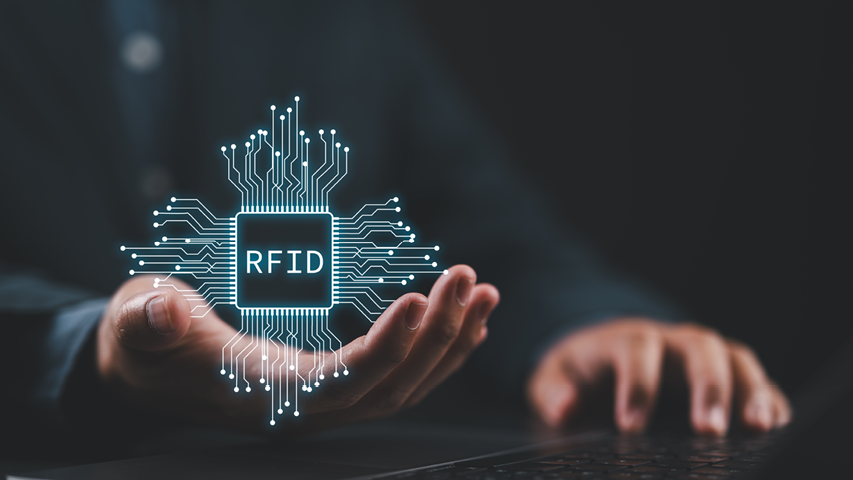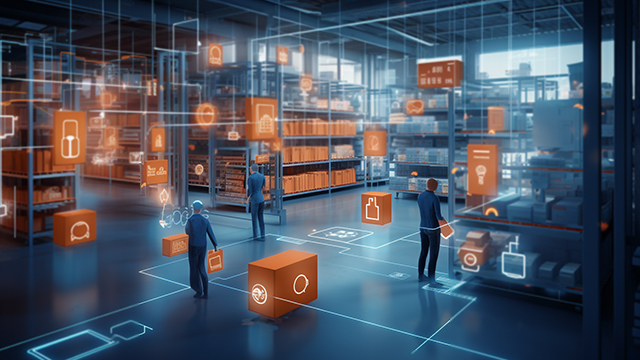Tap Into RFID’s Explosive Growth in EMEA
Why RFID Is EMEA’s Hottest Tech Opportunity – Now and For Years to Come
BlueStar's diverse portfolio offers unparalleled access to premium products and services that drive business growth and success. From state-of-the-art hardware to advanced software solutions, our portfolio is designed to empower businesses with the tools they need to thrive in today's competitive landscape.
Our vertical-based content focuses on different industry technologies, solutions, and insights.
A true VAD offers top-notch pick, pack and ship services, and provides programs and services that add value to the distributed products that increase their value or worth.
The BlueStar DifferenceIoT systems run on the free flow of data, and RFID delivers.
The global RFID market is expected to reach $18.45 billion by the end of 2023 and is projected to grow to $35.6 billion in just seven years. One growth driver is the increase of Internet of Things (IoT) implementations using RFID technology to collect data and share it with processes, systems, and people for greater efficiency and automation. IoT systems in manufacturing, logistics, warehousing, retail, healthcare, and many other industries leverage RFID technology.
Why RFID Technology Makes IoT Work
RFID complements IoT technology in several ways, including the following:
RFID labels and tags are cost-effective ways to track the movement of equipment, cartons, and inventory. RFID readers capture signals from the tags as they move from place to place, giving operators visibility into their location.
Data collection is much easier to accomplish with RFID tags than with barcodes. Reading ranges for tags differ, but low- and high-frequency tags can be read from a meter away, and some ultra-high-frequency tags can be read at 500 meters. This allows companies to passively read large volumes of tags, eliminating the need to manually scan barcodes or collect data in other ways.
Many companies find RFID tags for data collection because they can be encrypted. Companies that don’t want their information tampered with or want that information to be nearly impossible to counterfeit are turning to encrypted RFID solutions for secure tracking. The security of these encrypted systems, combined with the speed and capacity of the IoT, gives peace of mind to operators throughout IoT systems.
How RFID and IoT Are Benefitting Businesses
RFID and IoT technology can be utilized in almost every industry for a virtually unending list of applications. Consider how your clients in these industries could benefit:
RFID tags on containers, cartons, pallets, and even individual items can track shipments from production to customer to improve supply chain management. Perishable products like seafood and ice cream can benefit from real-time monitoring of environmental conditions, increasing transparency and preserving end-product quality. Time and location data from the RFID tag can trigger the IoT system to act quickly to adjust temperature controls or alert operators to take action.
Losing returnable assets, tools, or equipment can significantly negatively impact the bottom line. RFID and IoT technology can help reduce the risk of loss or damage. The IoT system can also collect data on asset usage and, if applicable, performance to help businesses maximize uptime and get the most value from their investments.
Transportation and logistics and 3PL companies are using RFID to track the movement of packages and freight, improving efficiency, and reducing the risk of delays. With real-time tracking on an IoT network, logistics companies can inform their customers exactly where their shipment is, enabling better labour scheduling and improving customer satisfaction.
IoT technology can help manufacturers automate processes, prevent delays by moving materials to production, and collect data for production planning and purchasing.
These solutions have already demonstrated an increase in inventory accuracy from 63 percent to more than 95 percent for those companies who have implemented them.
Next Steps for TSPs
Your clients are likely facing increasing demand, rising costs, and a general lack of skilled labour. As a solutions provider, you are in an ideal position to show them the benefits of implementing an IoT system that leverages RFID technology. Work with them to see how these solutions can support their business strategy and provide the most value to them.
Your expertise and technology know-how may be the key to helping your clients move forward to create a connected, real-time data collection system that gives them an edge.

Why RFID Is EMEA’s Hottest Tech Opportunity – Now and For Years to Come

Leverage wearable RFID scanners to boost productivity and accuracy for your logistics, healthcare, field service, and retail clients.

Help your clients comply with regulations and meet consumer demands for traceability in innovative ways with this familiar technology.
